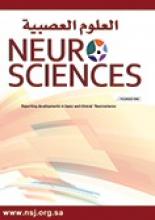Abstract
OBJECTIVE: To evaluate the early results of unilateral posterior lumbar interbody fusion technique in lumbar discectomy cases compared with simple discectomy and bilateral posterior interbody fusion cases using visual analog scale (VAS) and Oswestry outcomes instruments and radiological and physical examinations.
METHODS: The control group had 40 patients who underwent simple discectomy. In group one, 8 patients had recurrent disc herniations and facet joint hypertrophy, 21 patients had degenerative disc disease and facet joint hypertrophy. In this group polyetheretherketone (PEEK) cage was used for protecting the disc height and recurrence. In group 2, 15 patients had degenerative lumbar disc herniations and bilateral facet joint hypertrophy. All patients were operated upon between October 2002 between February 2004 at the Neurosurgery Department of Kocatepe University Medical School, and were followed by the help of radiological exams, VAS and Oswestry scores, and clinical exams. The groups were compared to each other statistically.
RESULTS: In the control group (n=40) there were recurrences and disc height loss. In group one (n=29) there were no recurrences and the height lost was limited. In group 2, (n=15) there was no recurrence, however, the lost disc height was more than group one.
CONCLUSION: If the patient has degenerative disc disease, the use of unilateral posterior PEEK cage and interbody grafting is a safer mode of treatment after discectomy.
- Copyright: © Neurosciences
Neurosciences is an Open Access journal and articles published are distributed under the terms of the Creative Commons Attribution-NonCommercial License (CC BY-NC). Readers may copy, distribute, and display the work for non-commercial purposes with the proper citation of the original work.






